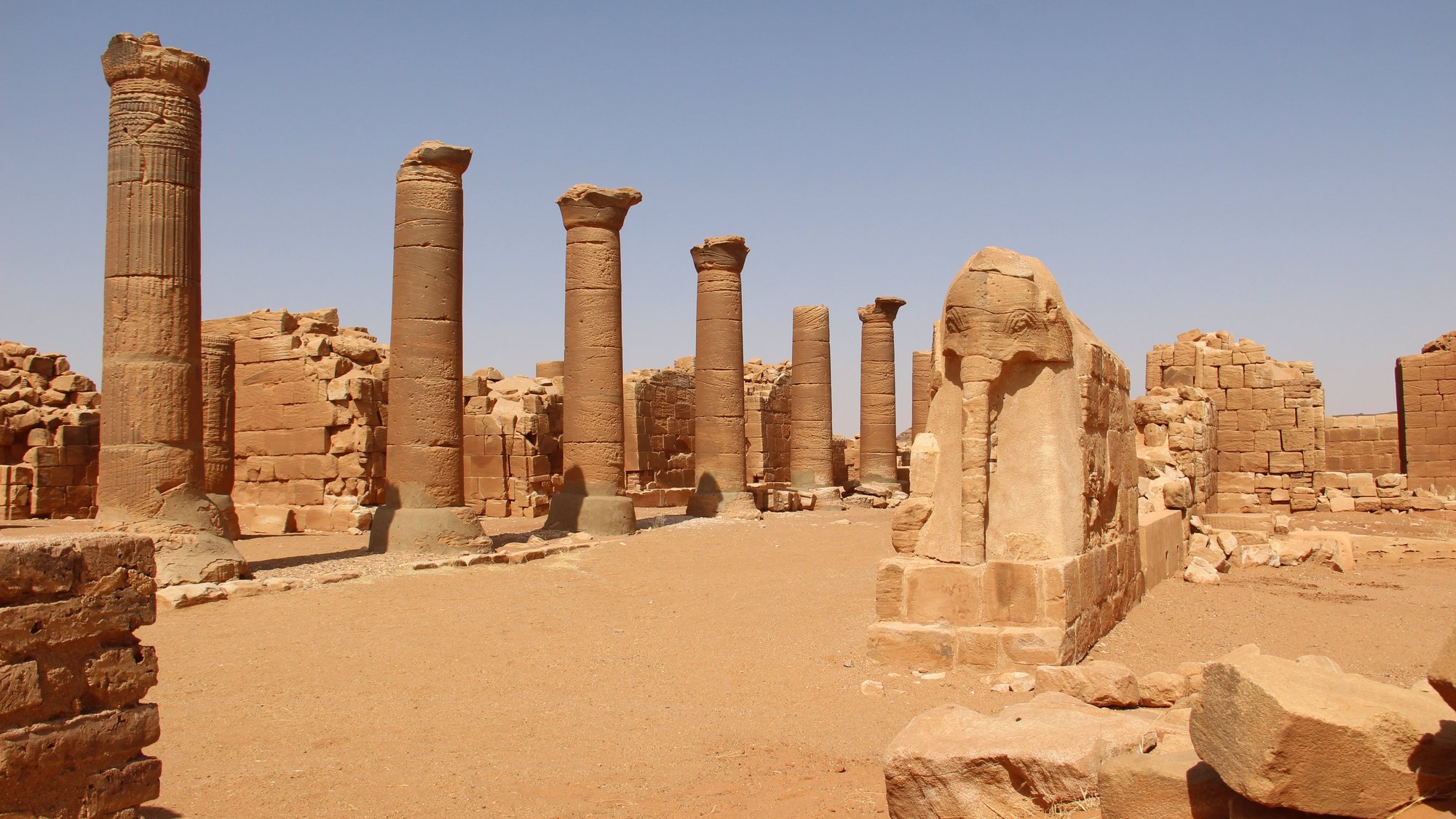Überblick
Musawwarat is one of the major monumental archaeological heritage sites in Sudan and part of the serial UNESCO World Heritage entry ‘Archaeological Sites of the Island of Meroe’, which comprises the ancient capital of Kush, Meroe, the ceremonial centre of Musawwarat and the town of Naqa. Musawwarat boasts numerous temples and other built structures, dating from roughly the middle of the first millennium BCE to the fourth century CE. Among these structures are the oldest known temple dedicated to the indigenous lion-headed god Apedemak, the labyrinthine building complex of the Great Enclosure and one of the largest artificial water reservoirs of ancient Sudan, the Great Hafir.
Since 1960, the long-term ‘Musawwarat Project’ has been dedicated to the study and preservation of the site of Musawwarat under the direction of Humboldt-Universität zu Berlin and in cooperation with the National Corporation for Antiquities and Museums (NCAM). Since 2020, the Commission for Archaeology of Non-European Cultures (KAAK) of the German Archaeological Institute (DAI) has been a cooperation partner of the ‘Musawwarat Project’, focusing on 1) a multisensory study of the archaeology of the ancient ceremonial centre, 2) capacity building for (World) heritage preservation and 3) the development of a collaborative archaeology of past and present pastoralism in the hinterland of the Nile.

